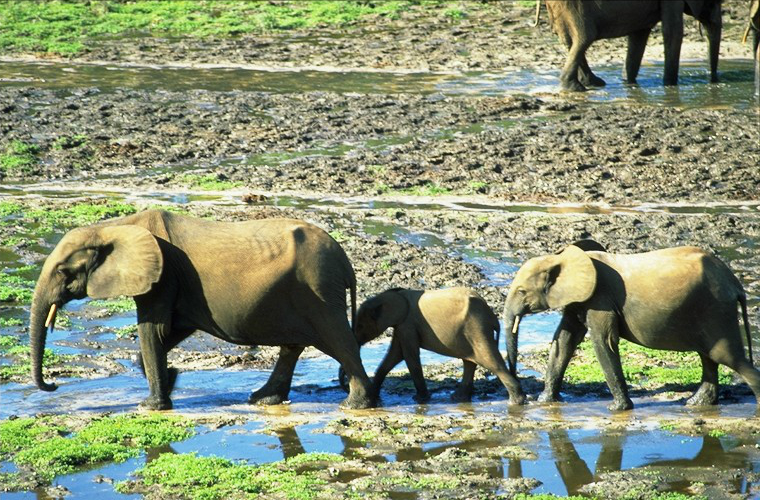

Left, African forest elephants, right, African savannah elephants.
Contrary to conventional wisdom, there are two species of African elephants, not one. Genetic analysis by researchers from Harvard, MIT, Max Planck Institute, UC Santa Cruz, the University of Illinois and the University of York has revealed that savannah elephants and forest elephants make up two distinct species.
Today, two major groups of elephants exist: African elephants and Asian elephants. African elephants come in two types, hitherto assumed to be variations within a single species: the savannah elephants, weighing in at six or seven tons, and the much smaller forest elephants, at about half that weight. In the geologically recent past, (10,000 years ago) mastodons and woolly mammoths were the dominant pachyderms. For this study, the scientists compared DNA samples from African savannah elephants, African forest elephants, Asian elephants, mastodons and woolly mammoths.
To their surprise, they found that African savannah elephants and African forest elephants were as genetically distinct as Asian elephants and mammoths. This indicates that the two kinds of African elephants form two different species that diverged as long ago as humans did from chimps.
Besides being interesting, this information has ramifications for conservation efforts. According to author Alfred Roca:
Since 1950, all African elephants have been conserved as one species. Now that we know the forest and savanna elephants are two very distinctive animals, the forest elephant should become a bigger priority for conservation purposes.
No comments:
Post a Comment